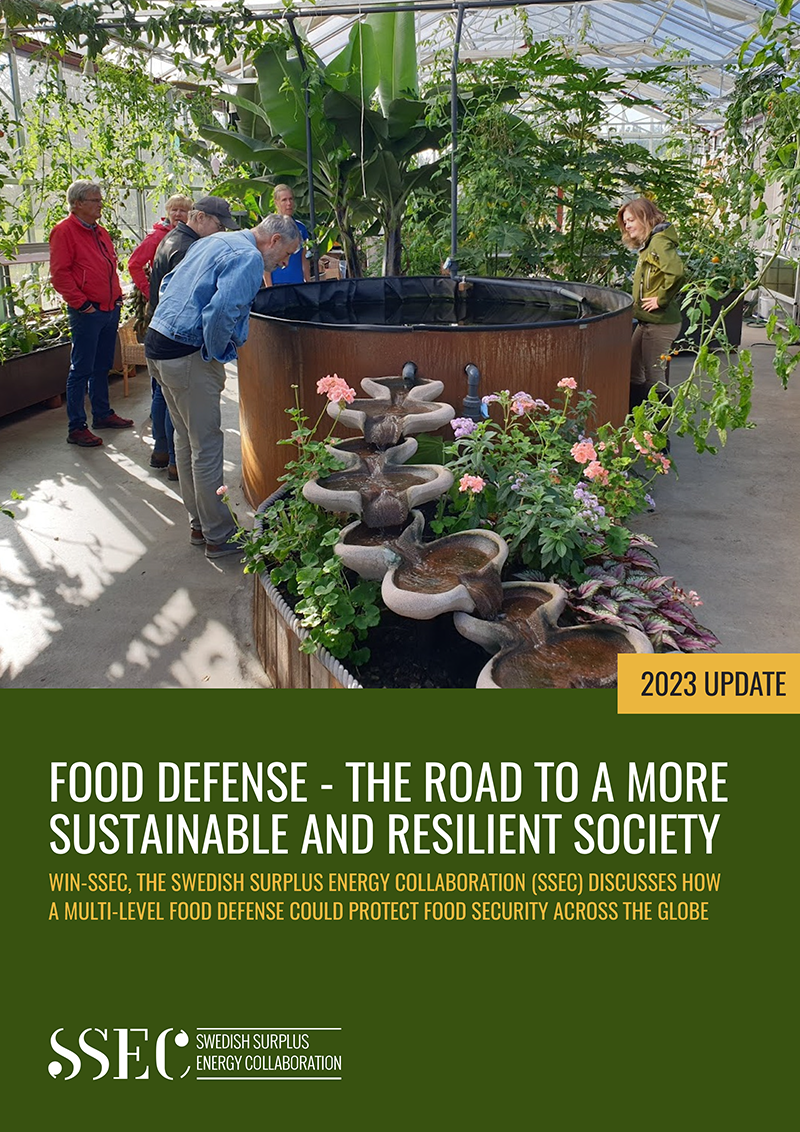Win-SSEC, the Swedish Surplus Energy Collaboration (SSEC) discusses how a multi-level food defence could protect food security across the globe
Everyone is talking about CIRCULAR BIO-ECONOMY – It is basically a matter of abandoning a linear production model in primary cultivation and the food industry. To be resource efficient and thus achieve sustainable and climate-smart production, collaboration between several industries needs to take place – Industrial symbiosis or as it is also called a circular production model.
This is done via production taking place in closed systems where nothing is described and treated as waste but is a resource, an asset. For several reasons, it is important that a country’s or region’s degree of self-sufficiency is at a level that can withstand unrest and challenges without the system collapsing with gigantic price increases or food shortages. At the same time, it will lead to the production model itself being sustainable and climate smart. I want to highlight factors for a circular production model.
Energy, power supply and logistics
To produce food, we must use large amounts of energy, in addition to an ever-increasing scale. The reason the need for energy is increasing is that more and more people are moving to the city and that the population is growing. Today, more than 50% of the world’s population lives in cities.
The world’s production system is changing at a furious pace and increasingly energy-intensive means of production such as fertilizers and pesticides are being used. Because we still use the same areas to produce our food, as when we ourselves lived in the countryside, it requires many, long and expensive modes of transport to the city. The conclusion of this is that transports on our roads and in our cities is increasing more and more. It is by no means sustainable.
The question we must ask ourselves then is:
Can we save energy and reduce logistics when we produce food?
Intensive and circular food production
- We need to close the systems and make them circular and symbiotic. By using modern technology and circular cultivation systems, we can dramatically reduce the need for arable land to produce food.
- We can reduce transports by starting to produce food locally and in urban locations. We thus also become less dependent on imports.
- We can develop and embrace intensive, symbiotic, completely closed production systems that are more environmentally friendly than large-scale production on arable land.
- We can produce renewable fuels and lubricants with ecologically sustainable renewable materials.
- We can develop ecologically sustainable fertilizers and sustainable systems for nutrient supply of food crops.
- We can develop ecologically sustainable plant protection products and systems for the protection of food crops against diseases and pests.
Food production in houses where people live
Producing our food locally, where people live, is undoubtedly part of the solution.


